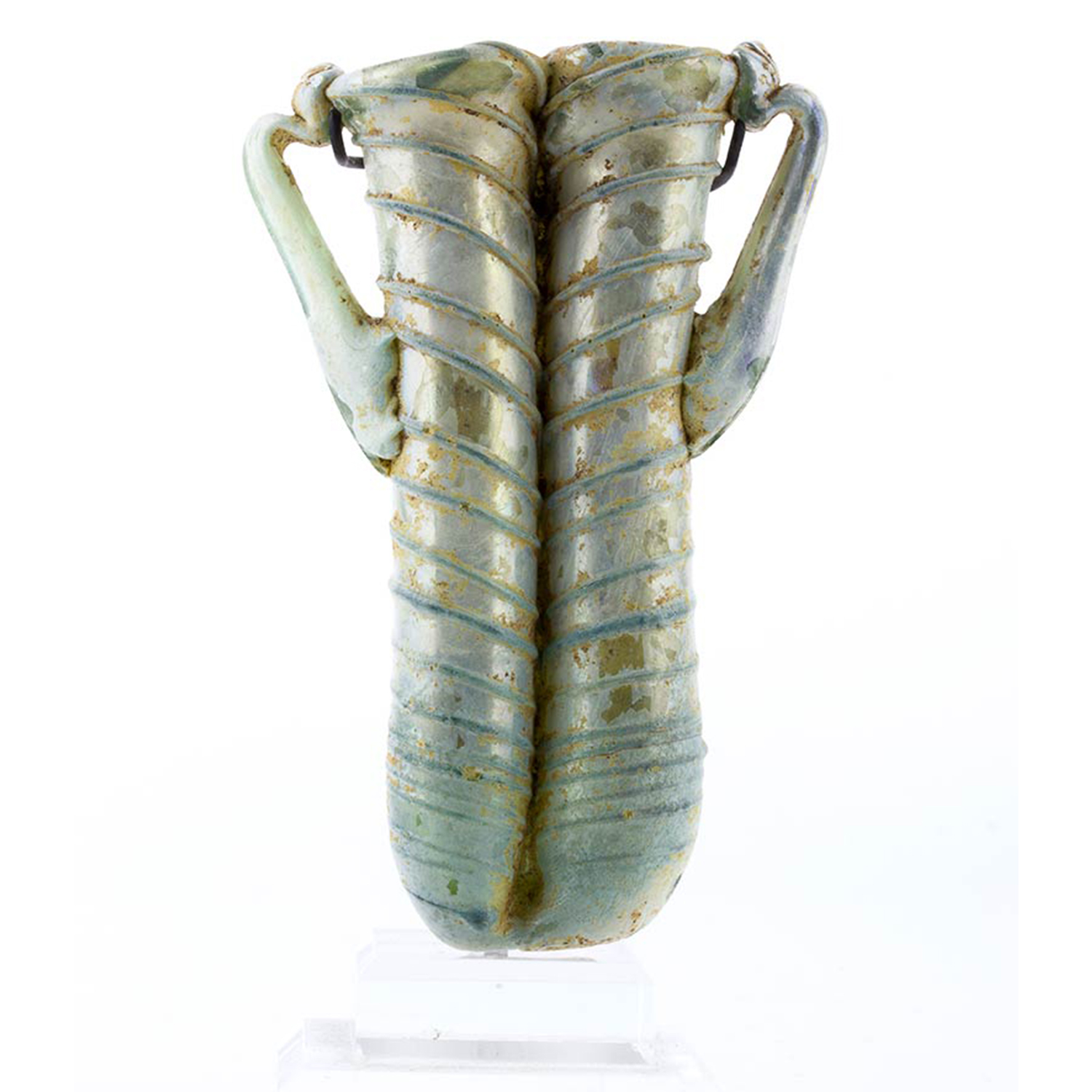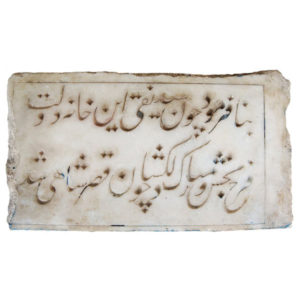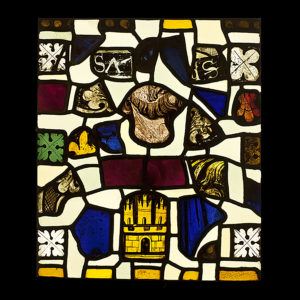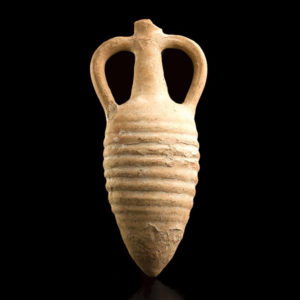A beautiful light-green glass with a thin layer of iridescence.
The double-flask body is decorated with applied horizontal spiral trail.
Two handles attached from mid-body to rim, the rim folded inward.
Mounted.
The balsamarium is a variant of the typical Roman glass unguentarium. Produced in large numbers, they were items of every day use for holding and storing perfumed oils, as well as other expensive liquids and powders. The small body and mouth allowed the user carefully to pour and control the amount of liquid dispensed.
By the 1st century AD, the technique of glass-blowing had revolutionised the art of glass-making, allowing for the production of small medicine, incense, and perfume containers in new forms. Glass was often the preferred material for storing oils because it was not porous.
These small glass bottles are found frequently at Hellenistic and Roman sites, especially in cemeteries, and the perfumes which filled them would have been gathered from all corners of the expansive Roman Empire.





